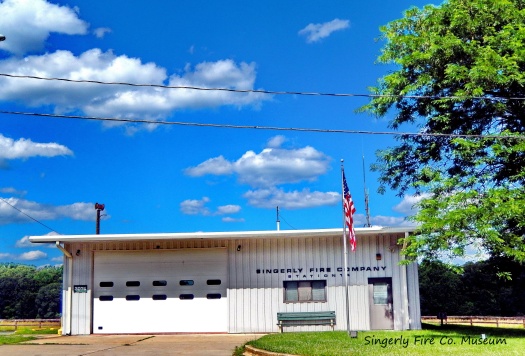
By Eric Mease — Cecil Whig, June 22, 2013
You know those black and white prisoner of war flags you see flying in the area from time to time? They have a white outline of a man on a black background with his head bowed superimposed on a watch tower also in white. It’s an ominous flag. It serves as a reminder that in every war there are Americans taken prisoner and it is our duty to do everything we can to free them.
Cecil County has had its share of prisoners of war throughout our nation’s history. One of them, during the Civil War, was the Rev. Joseph T. Brown. Brown was in his fifties when he volunteered to serve as the chaplain for the 6th Maryland Volunteers. On October 23rd, 1862, Brown took a train to Williamsport, Maryland to begin his basic training before going to the front. Eight months later Brown was taken prisoner by Rebel forces and marched over 200 miles to the notorious Libby Prison in Richmond, Virginia.

Brown spent 3 months as a guest of Jeff Davis in Libby. During that time he noted the number of wounded from his unit, the cost of bread, how to barter for tea, and the limb amputations that he witnessed. On July 3, 1863, Brown was picked to draw lots to see which two of his fellow prisoners would be executed in retaliation for the execution of 2 Rebel spies in Kentucky.
But Brown’s happiest recollection was his return to his Cherry Hill community. He wrote, “I arrived in Elkton at about 9 o’clock and found quite a number of citizens awaiting my arrival. My son was waiting for me at Elkton. I started home and when I arrived there found a party waiting amid the town (which) was illuminated, the choir was present and sang. To meet my friends once more. Thank God for his goodness at home again.”
This is a lot of detail about a man’s war time experiences. How did we come by all this information? Truthfully, we cheated! We have two of Chaplain Brown’s war time diaries, including the one that he kept while in Libby Prison. We also have a few letters that he wrote before, during, and after his imprisonment. From these letters and diaries we know many aspects of not only Chaplain Brown’s life, but his family life, the lives of some of his fellow soldiers, and the conduct of the war in northern Virginia while Brown served. Without these letters and diaries, our knowledge of all of these things would be severely wanting.
While we know a lot about Rev. Joseph T. Brown of Cherry Hill, Cecil County, there’s a lot we don’t know. We don’t know what happened to his family after he died a short time after the war ended. We don’t know much about his service at Cherry Hill Methodist Church. We know he was a member there and preached there frequently, but we don’t know in what capacity. He wasn’t the pastor there, so what was he? What ever happened to his Bible? Perhaps he owned more than one. What happened to them? Are there other letters and journals? Where are they? We assume Brown wore a uniform during his years of service. What did it look like? Did he save it? Is it still in existence? Most importantly of all, we don’t know what Rev. Brown looked like. We have a picture of his tomb stone. We have the stain glass window at the Cherry Hill Church dedicated to him, but we have no picture of the man! Which brings us to the purpose of this article. We need your help. The Historical Society of Cecil County is celebrating the 150th anniversary of the Civil War with an exhibit which includes some of Rev. Brown’s letters and his diaries. We would like to add to our collection. We would like to answer those questions that are nagging us and we’d like to have a picture! If you are a descendant or know a descendent of Rev. Brown, and you have any of these things or other artifacts/mementos from Brown, please let us know. We want to talk to you about them! Please see our web site at www.cecilhistory.org and click on “Contact Us.” Or, give us a call at 410-398-1790 and leave a message. We will return your call.















